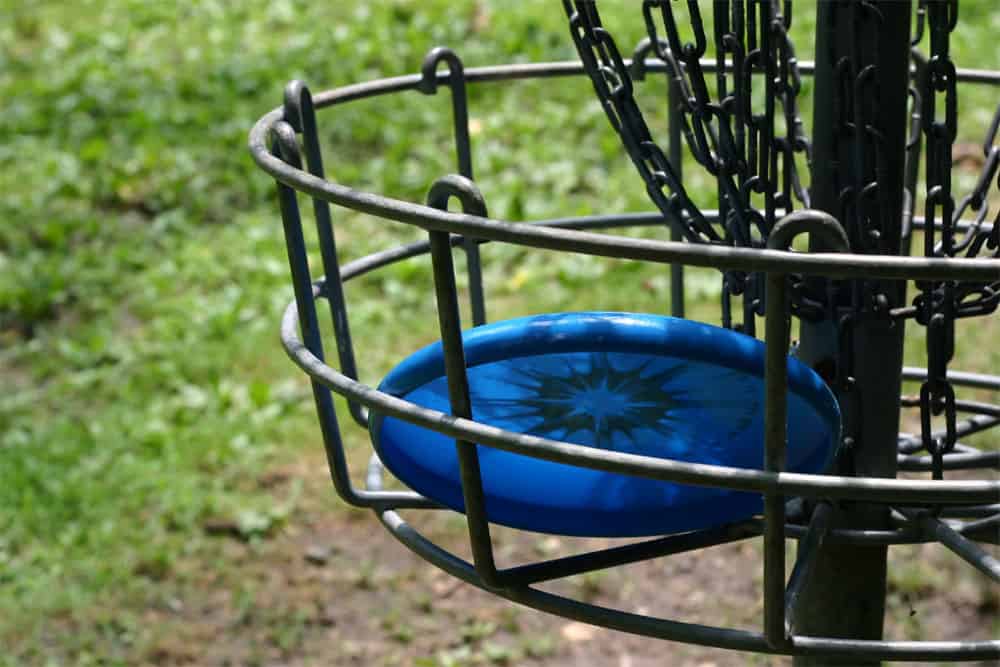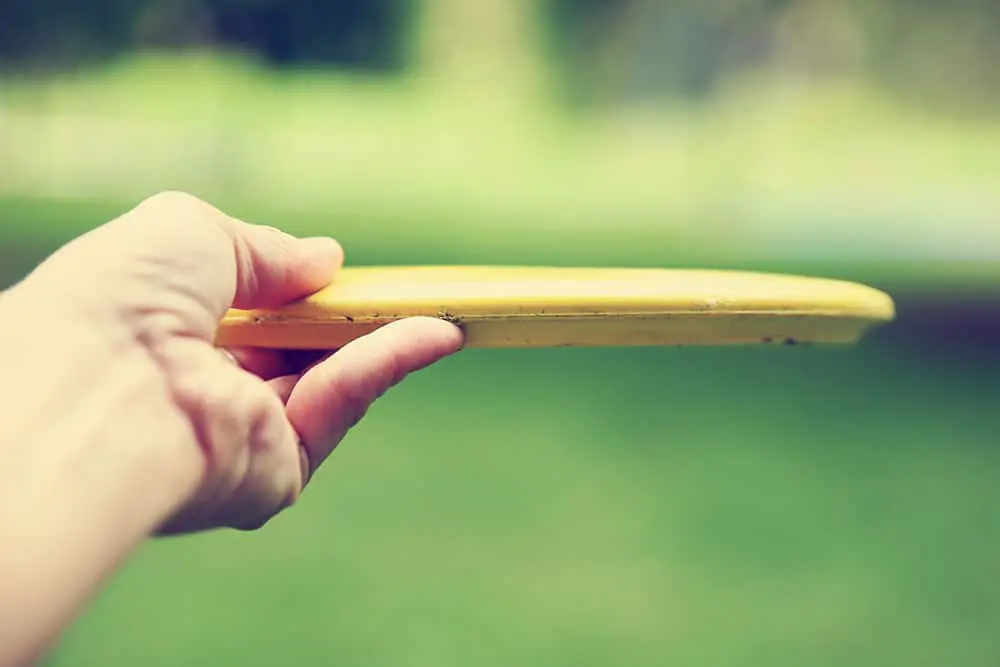When you first get bitten by the disc golf bug, it’s all about the excitement and fun, but once you’re over the honeymoon period, it’s time to knuckle down and work on your technique.
At this point, one of the most common (and irritating) hurdles that newer players encounter is the dreaded turning disc, but if this is what you’re going through at the minute, try not to let it stress you out.

You’re going to have way more fun and play far better if you can relax. Pretty much everybody has to experience this at some point. It’s all just part of the disc golf learning journey.
There are two primary causes for a disc turning against your will and, seemingly, all the laws of physics. It’s either something to do with the design or state of your disc, or it’s a technique issue.
Flippy Discs
Now, I know that “flippy discs” sounds like some terrible 70s prog-rock band that never made it and still practice in the drummer’s mother’s partner’s basement, but it’s actually a disc golf term.
It essentially refers to an unstable disc with a tendency to veer in unexpected directions, tip slightly or – as is the case here – completely flip over.
For instance, you may throw an RHBH (right-hand backhand), expecting the disc to swerve back to the left, but it keeps on veering further to the right.
What Makes A Disk Flippy?
Old Age
If a disc has become flippy, it’s almost certainly down to some form of disrepair that’s preventing it from flying how it was initially designed to. It can be annoying if it hits you out of the blue, but try to resist the urge to throw them in the trash, because you can use them to your advantage.
If you’re yet to develop a strong forehand shot, you can use your flippy disc to bend your RHBH annhyzer into a similar area.
Flippy discs also make fantastic rollers, which means you can use them towards the end of a hole to physically roll you closer to the basket, setting you up for an easy finishing stroke.
You can achieve this with normal discs too, but it’s much easier to get a flippy disc to turn and hit the ground running, so to speak.
Born Flippy
A disk doesn’t have to be a battered old relic to exhibit flippy behavior. Some are designed to be under-stable in order to give you another shooting option during a round. They’re especially useful in a tight spot with plenty of obstacles to navigate.
Even though a flippy disc may seem like something of a wild card at the minute, once you get some practice in with them and learn about their quirky aerial behavior, they’re no longer unpredictable, just another arrow in your quiver.
Technique Issues
If you’re experiencing these full flips even when using super stable discs, it all comes down to your technique. You’d be forgiven for thinking that throwing a disc would be a pretty straightforward task, but there are tons of variables involved.
Any slight shift in movement or force can alter the course and orientation of the disc. Let’s take a look at what you might be doing wrong.
Overpowering The Disc
If you’ve noticed the turning over happens during your midrange disc shots, I’m happy to report that it’s an easy fix. It usually just means that you’re giving it a bit too much juice.
Even if you had a weak start with your driver, and you’re lagging behind some, you should never treat your follow-up shot like a secondary drive. Midrange discs just aren’t meant for that kind of force.
If the power of the throw exceeds the required spin speed, it destabilizes them mid-flight and flips them over, increasing drag, reducing distance, and changing its course.
You’ll find that you get a good few extra yards in if you just take it easy, focus on your form, and throw with less force.
To do so, you can try halving the reach-back you’d typically use for a drive and apply it to your midrange game, or perhaps even take fewer or smaller steps leading up to the shot. If that’s not working, you should consider reducing your shoulder turn.
Not Enough Height
If power isn’t the problem, there’s a good chance that you’re not throwing your disc with a high enough trajectory. Midrange discs, in particular, have a weak lift, so you need to compensate for that with your release angle.

It can seem a little scary at first shooting higher with your mids, but as long as you keep the nose down, you won’t sacrifice any accuracy. Why not try establishing a pull line around the neck area rather than the chest and lower abdomen?
Grip Gripe
As I mentioned earlier, a turning disc can be symptomatic of slow spin. This is still true of low-power shots. If the power-to-speed ratio is off, that disc is going to flip and dive. This is more prevalent in wider discs, as it takes more force to get them to spin as fast as their thinner counterparts.
Each grip style creates a different amount of spin. All you need to do is experiment with them and see what works for you.
Ratty Release
Still no luck? Dang it. As a final push for stability, let’s troubleshoot that release of yours. If you’ve got the spin just right, but your release isn’t clean, you’ll run into the same turn over again and again.
My advice is to experiment with wrist angle, finger strength, thumb/finger placement, and to spend some time getting to know the feel of your disc.
Summing Up
That just about covers all bases, I believe. You’ve got a lot to work through here, so take your time, and try to narrow down possible causes one by one. It’s a good idea to film a few of your shots, so you can examine it in greater detail.
Ultimately, the goal is to focus on shooting with finesse. Instead of worrying about distance and force, contemplate fluidity and quickness, and your form will improve in no time!
